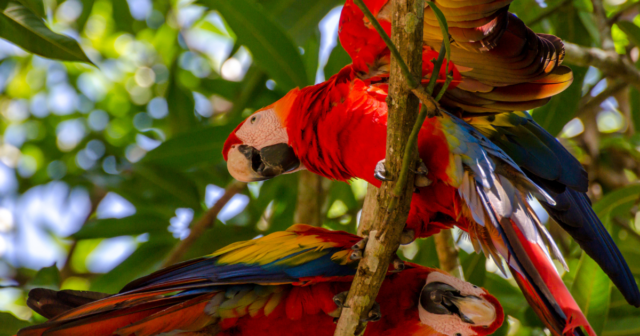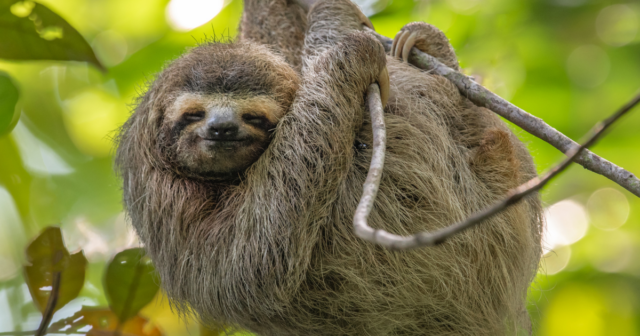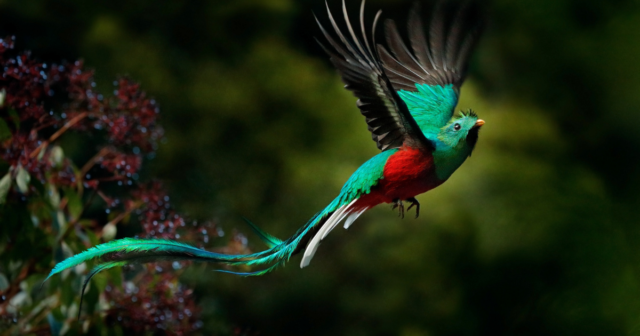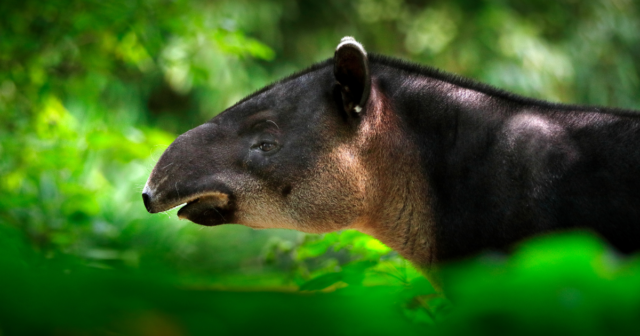5 Must-See Animals on Costa Rica Wildlife Holidays
ABOUT
At Our Whole Village, we plan meaningful vacations for families who want to create lifelong memories and show their kids the world in a more conscious and intentional manner.
WORK WITH US
We help families take meaningful vacations so that they can escape everyday life, show their kids the world and make lifelong memories - with care, confidence and peace of mind.
THE BEST FAMILY VACATIONS BY AGE
Your (free) guide to the top travel destinations for families with babies, teens and everyone in between.
DOWNLOAD NOW
ABOUT US
June 7, 2023
There’s no better introduction to traveling Central America with kids than Costa Rica. The nation’s incredible biodiversity and pristine natural settings are evident from its beaches to its rainforests and volcanoes. The food is fresh, local, and delicious. Ticos and Ticas (what Costa Ricans call themselves) are welcoming and highly value family life and children. And the tourism industry has worked hard to make the country convenient and safe to travel, even for families with the youngest and most inexperienced travelers.
Best of all, a Costa Rica family vacation is chock full of tropical adventures. You and your kids will never run out of fun things to do. Especially when it comes to activities centered around wildlife. Where to see animals in Costa Rica? From colorful birds to sloths, quetzals to tapirs, the destination teems with stunning fauna. Keep reading for our top five picks to maximize your Costa Rica wildlife holidays.
1. Tropical Birds

© Jorick van Gorp | Getty Images via Canva Pro
Costa Rica is home to a colorful array of feathered friends. We’re talking hummingbirds, macaws, toucans, parrots, trogons, and parakeets … just for starters. At the great green macaw sanctuary Ara Manzanillo, learn about parrot conservation programs and, more specifically, the process of rewilding great green macaws.
After more than a decade of successful reintroduction, the breeding program is booming. As a result, your family will enjoy many chances to see these rainbow-colored birds in the near wild. While touring the jungles of Costa Rica, you’ll also have many opportunities to see tiny iridescent hummingbirds and scarlet macaws hanging out in the canopy. You may even see toucans tossing their heads back to slide berries and fruit down their long beaks into their gullets come snack time.
What are some of the best places to see tropical birds? Top locations for birdwatching in Costa Rica include Sarapiqui, Boca de Tapada, La Fortuna, Monteverde, and Puerto Viejo de Talamanca. Of course, these biodiverse hot spots also provide chances to see many other incredible animals like sloths, monkeys, and tapirs.
2. Sloths

© Harry Collins | Getty Images via Canva Pro
On a trip to Central America with kids, sloths are among the most fascinating animals you can see. The planet hosts six species of sloths, and Costa Rica is home to two of them: Hoffman’s sloth and the brown-throated sloth. Which physical differences distinguish these two species? At the top of the list are digits. Hoffman’s sloth has two toes, and the brown-throated sloth has three. Both animals make their homes in Costa Rica’s biodiverse tree canopies. Another key difference is when they’re active. Two-toed sloths are primarily nocturnal, so you’re less likely to see them. If you scope one out during the day, it’ll likely be deep in slumber.
The markings on sloths’ heads make them good-natured-looking little chaps with perpetual grins plastered across their visages. And their reputation for being incredibly slow is well-earned. Not only do they move at a snail’s pace, but their inner workings mirror their outside actions. In fact, they have the slowest digestive system of any mammal worldwide! Everything in their design is about saving energy, translating into painstakingly measured movements and about 20 hours of sleep per day.
Where should you travel in Costa Rica to see these affable creatures? If you’re with small children, their patience may not last long enough to see them in the wild. For this reason, we suggest visiting one of the country’s sloth sanctuaries. They include the Sloth Sanctuary of Costa Rica near Cahuita and Puerto Viejo and Selvatura Park’s Sloth Sanctuary in Santa Elena. One of the best locations for families with older kids who want to see sloths in their natural habitat is Manuel Antonio National Park. Another fantastic option is the picturesque Arenal Volcano National Park, with its lush tropical forests and expansive views of the towering Arenal Volcano.
3. Resplendent Quetzals

© Ondrej Prosicky | Getty Images via Canva Pro
The resplendent quetzal is so stunning we couldn’t lump it into the “tropical birds” category. Its plumage is an iridescent turquoise and green hue with pops of scarlet beneath its tail, giving the bird a magical, jeweled appearance. You’ll never forget seeing one in the wild! Where should you travel in Costa Rica to up your odds of observing them? Monteverde Cloud Forest Reserve or the Curi-Cancha Reserve.
That said, Monteverde remains among the most well-known habitats for this near-threatened bird, which is a member of the trogon family. Male quetzals grow dual tail feathers during mating season that reach up to three feet long! Because of the glory of their long, shimmering feathers, the bird historically attracted the attention of Mesoamerican rulers and nobility.
Elites wanted to wear the quetzals’ emerald feathers as signs of status and deification. The plumage was also used like money, which is echoed in Guatemala’s currency, the quetzal. But it was a crime to kill the birds, considered the “gods of the air.” So, indigenous peoples captured them, plucking their long tail feathers before release.
4. Baird’s Tapirs

© Ondrej Prosicky | Getty Images via Canva Pro
Putting Baird’s tapirs at the top of your family’s wildlife viewing list for Costa Rica could lead to disappointment. So, you’ll want to manage expectations upfront. This incredible species is vulnerable to extinction, with a mere 6,000 (or less) left worldwide today. A guided tour will give you the best bet of seeing one in the wild. And even if they don’t show, you’re sure to see plenty of other breathtaking flora and fauna along the way.
Some people say Baird’s tapirs look like a cross between a mule and a pig, and others argue it looks more like a mini elephant with a stunted trunk. Only the mule comparison comes close to the animal’s actual heritage. It’s most closely related to the rhinoceros and horse families. Beyond that, it’s a large, slow-moving herbivore, tipping the scales at between 500 to 880 pounds. So, if you’re lucky enough to stumble on one, you’ll probably have plenty of time to capture pictures as it saunters away.
The largest population of these animals lives in Corcovado National Park. But other great spots to see them include Santa Rosa National Park, Rincon de la Vieja National Park, La Selva, Cerro de la Muerte, Tenorio National Park, and the Monteverde Cloud Forest Reserve.
5. Red-Eyed Tree Frogs

© dndavis | Canva Pro
When it comes to jungle life, a kid favorite remains the red-eyed tree frog. This colorful character has large, bulging red eyes, orange webbed feet, and a lime-green body. Bright blue stripes line their thighs, and their flanks are striped with yellow and blue.
Although the combo sounds impossibly flashy, it represents the perfect strategy for avoiding predators in the rainforests of Costa Rica. The bright hues literally “startle” predators, offering the frogs an extra couple of seconds to hop away to safety. And the frogs are especially good at tucking themselves into tight little balls with only their green showing when it’s time to camouflage among tree leaves for a bit of shuteye.
The best places to scope them out should be ringing a bell by now. We’ve already mentioned them in the context of other animal expeditions. These destinations include Manuel Antonio National Park, Monteverde Cloud Forest Reserve, and Tortuguero National Park. As you can see, the great diversity of life in Costa Rica means you may be able to check several critters off your list during the same park tour.
Go Wild on Your Costa Rica Wildlife Holidays
The list above of the best wildlife in Costa Rica is by no means exhaustive. And there are many other creatures you’ll see while “hunting” for birds, sloths, tapirs, and frogs. They include the mantled howler monkey, the Central American squirrel monkey, the white-faced capuchin, and the Central American spider monkey. These furry guys like to hang out in the rainforest canopy, indulging in a cacophony of hoots, hollers, and calls.
There are also plenty of opportunities to see marine life along the coastline, including whales and sea turtles. Turtle species in the region include leatherback turtles, hawksbill, green sea turtles, and Olive Ridley. There are many protected places to find them, including Tortuguero National Park, Ostional Wildlife Refuge, Las Tortugas research station, Las Baulas National Park, and Corcovado National Park. And a whale-watching expedition off the coast will let your family witness humpback whales during migration season.
Are you ready to start planning your Costa Rica wildlife holidays? If so, we’ve got you covered. Let’s chat about your family’s next vacation and how to pack it with exhilarating wildlife-oriented activities.
OUR SERVICES
HOME
COPYRIGHT © OUR WHOLE VILLAGE 2021
DESIGN BY GIRLBOSS DESIGNER | CUSTOMIZED BY ALEX COLLIER DESIGN
about
TRAVEL SERVICES
DESTINATIONS
BLOG
PLAN A TRIP
FREE TRAVEL GUIDE
TERMS AND CONDITIONS
hello@ourwholevillage.com
+1 305 432 2612
